Protecting South Africa’s Precious Trees
November 13, 2018 - 5 minutes read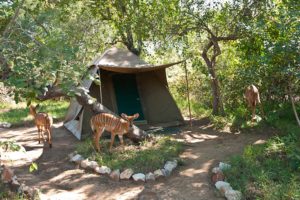 Although EcoTraining is celebrated for its efforts to protect wildlife, the guide and guardian gurus are also doing their thing to protect South Africa’s rare and endangered trees.
Although EcoTraining is celebrated for its efforts to protect wildlife, the guide and guardian gurus are also doing their thing to protect South Africa’s rare and endangered trees.
Selati Game Reserve — where EcoTraining conducts many of its field courses — is home to eight officially protected trees. According to South Africa’s National Forestry Act, no one may cut, disturb, damage or destroy any protected tree . . . except maybe elephants.
In addition, you’re not allowed to possess, collect, remove, transport, export, purchase, sell, donate or in any other manner acquire or dispose of any protected tree or any product produced from a protected tree, except under a license or exemption granted by the Minister of Agriculture, Forestry and Fisheries.
Below is a quick glimpse of each of the trees and how they’ve helped human beings.
Once you’ve learned about these special trees, EcoTraining dares you to take the #EcoTrainingArborDrive challenge and plant at least one tree for a chance to win a seven-day EcoQuest course. Click here for a quick step-by-step guide on how to enter the competition.
Baobab
Also called the Cream of Tartar, the majestic Baobab is one of Africa’s most iconic trees. Selati boasts just one really big example, located in the northern part of the reserve. That’s because elephants eat young Baobabs like they’re dessert and few get a chance to grow to full maturity.
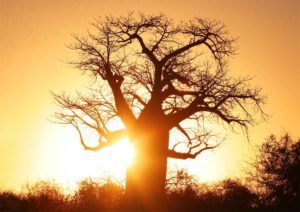
Alastair Gibson
Torchwood
Fruits produced by the Torchwood contain a flammable oil used by the Bushman of southern Africa to light up the darkness of the African night.
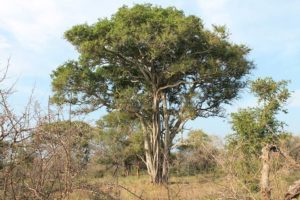
Shepherds Tree
In times gone by, Shepherds Trees provided herders with much-welcomed shade and valuable food for their goats. Meanwhile, the roots were used to make a hot tea-like drink.
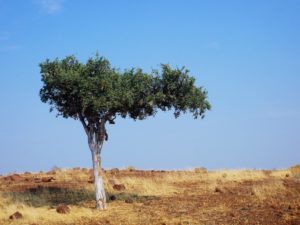
Namibia Reservations
Matumi
Also known as the Woodworkers Friend, the wood of the Matumi is especially beautiful — a fact that has driven the tree to near extinction. Traditionally used to make a tonic for children, the Matumi is found along rivers and streambeds in Selati Reserve.
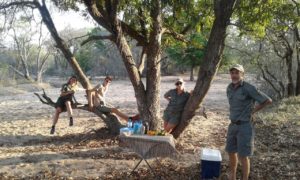
Leadwood
Because Leadwoods can live for thousands of years, many Africans believe that ancestral spirits reside in their ancient branches. The next time you walk past a Leadwood, remember that your great (great) granny might be looking down at you. Be sure to greet her with the respectful word “makhos.” Slow growing and among Africa’s largest trees, they flourish in alluvial soil and beside rivers.
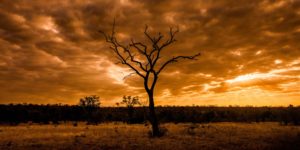
sabisands.com
Bushveld Saffron
The leaves of this unique medicinal tree are used to make tea that soothes a sore throat. The name derives from the fact the tea carries a slight taste of saffron.
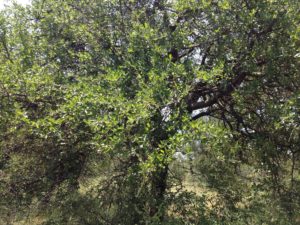
ispotnature.org
Apple-Leaf Tree
No, this tree doesn’t bear apples. But if you camp beneath, the tree might warn you of approaching danger. That’s because the leaves make a sound similar to biting into an apple when an animal or human walks on them.
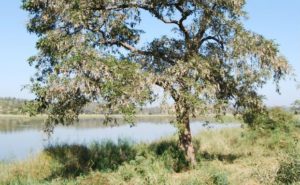
Fascinating Africa
Marula
The bark, leaves, fruit, nut and kernels of this legendary tree have many uses. The fruits and nuts are particularly rich in vitamins and minerals. And the fruit, when fermented, is said to drive elephants mad. Marula oil is used in cosmetics, while the fruit provides the signature ingredient of a Amarula cream liqueur. Because these trees are dioecious (gender-specific), the bark is made into infusions that can allegedly determine the gender of an unborn child.
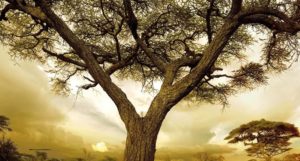
South African Tourism
0 Comments